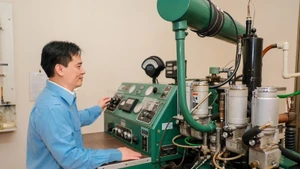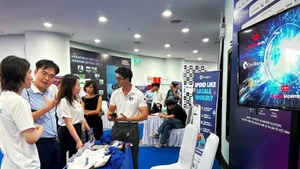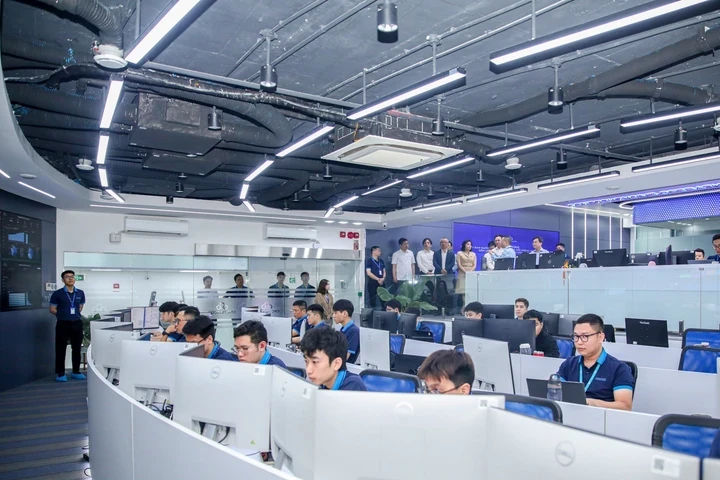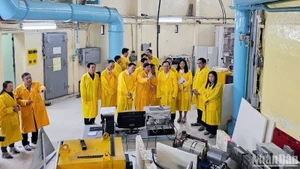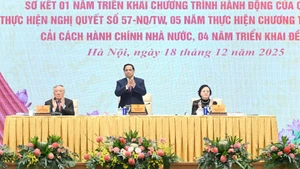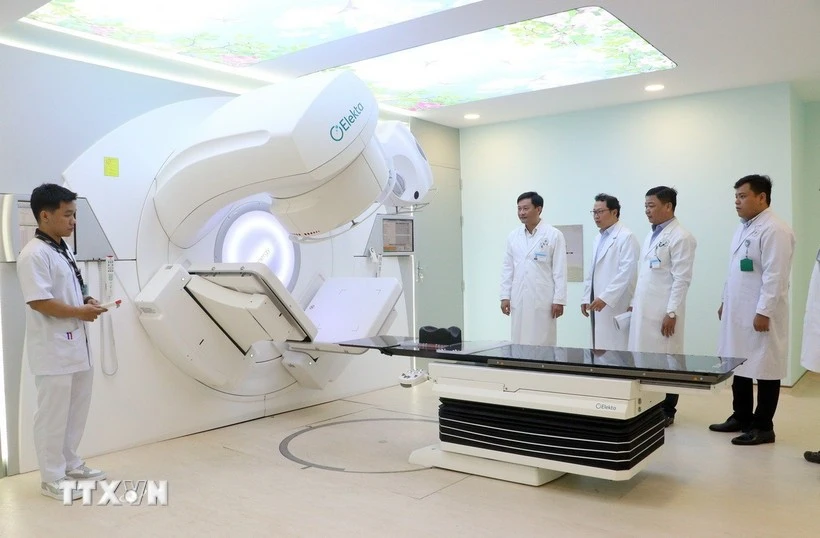The task of restructuring the apparatus and administrative units, especially restructuring administrative units at the district and commune levels, is a major policy, of strategic significance in streamlining the apparatus and improving the effectiveness and efficiency of management. However, this process is and will arise significant challenges in the field of administrative procedure settlement.
Specifically, the change of administrative boundaries, names, and related regulations has caused confusion and lack of information for people and businesses, leading to a sudden increase in the need to ask questions and perform administrative procedures. In addition, in the context of streamlining the payroll, the team of officials and civil servants must both grasp the new business processes and handle the increasing number of documents, causing great pressure and potential risks of delays and errors.
To effectively address these challenges, ensure the arrangement process takes place smoothly and transparently, minimize inconvenience for people and businesses, and optimise administrative resources, the Viet Nam Posts and Telecommunications Group (VNPT) has developed specialised AI applications to support the effective processing of administrative procedures during the transition period.
“Personalisation” to serve people and businesses
“Virtual Assistant for Citizens – Businesses” is an integrated AI platform, operating as a single, intelligent digital touchpoint, comprehensively supporting people and businesses in all administrative procedures arising from the merger process.
With the function of automatically answering information 24/7, this application uses natural language processing technology (NLP) to understand and answer accurately and immediately thousands of questions from people and businesses about new administrative boundaries, changed names, necessary documents that need to be adjusted (household registration, citizen identification, business license, land use right certificate, etc.). The application also provides information on new policies and regulations arising after the merger in an easy-to-understand, personalized way for each case.
In addition, based on the information provided by the user (type of document to be changed, old/new address, type of business), AI will automatically identify the administrative procedures to be performed and provide detailed instructions for each step and each document to be prepared, while providing direct links to the electronic forms to be filled out, even supporting automatic filling of part of the information if the data is already available from the national database, minimizing errors and time for people.
This AI system also automatically collects, analyses and updates the latest legal documents and announcements from ministries, branches and localities related to mergers, ensuring that information is always accurate and timely for both people and businesses.
Thanks to the above functions, the AI application “Virtual Assistant for Citizens – Businesses” will significantly reduce the burden of direct questioning for officials in charge of handling administrative procedures, freeing up their time to focus on processing complex records that require in-depth assessment.
The application also helps improve the satisfaction and experience of people and businesses, helping them proactively search for information and perform administrative procedures anytime, anywhere, minimising waiting and travel time, creating transparency and trust. In particular, the application also ensures the uniformity and accuracy of information, limiting the situation where each place explains differently, causing confusion, creating fairness for all subjects.
AI supports administrative procedure processing
VNPT has also developed a series of AI applications deeply integrated into the administrative procedure processing system to help officials and civil servants process administrative procedures more effectively during the transition period.
First of all, there is a system of AIs that support intelligent classification and checking of records. These AIs use “computer vision” technology to automatically scan, identify and read information from documents and records; automatically classify records, extract data and check validity according to new regulations and forms of administrative units after the merger; then automatically warn about shortcomings, errors or invalid records, helping officials detect early and request timely supplements, reducing the rate of records that must be returned.
Next are AIs that support decision making and record processing. These AIs will analyse data from records, and compare them with the relevant regulations to propose solutions or suggest next steps for staff. In complex cases, AI can point out points to note or relevant legal documents for staff to refer to, speeding up the appraisal process.
Finally, AI automates reporting and statistics. Accordingly, the application will automatically synthesize data from the process of receiving and processing administrative procedures (number of records, average processing time, types of administrative procedures that arise the most, common errors, etc.).
From there, the creation of visual, real-time statistical reports will help local leaders, departments, branches and sectors have a comprehensive view of the effectiveness of administrative procedure settlement, easily identify bottlenecks to give timely direction.
The results of the practical test show that these AI systems have significantly improved the productivity of officials, reduced manual, repetitive and error-prone tasks, helped officials focus on professional tasks as well as solve more complex problems; ensure transparency and fairness in handling administrative procedures when processes are digitised and controlled by AI, minimizing subjective intervention and negative risks; at the same time, provided accurate and timely data for management, supporting grassroots and local leaders to make quick and effective executive decisions, based on real data.
Experience modern, fast and effective digital administration
The test of AI application in supporting the processing of administrative procedures in Ho Chi Minh City in May 2025 has brought many positive results. Specifically: The time to receive and respond to people has been significantly reduced; people and businesses are supported more accurately, reducing the need to travel many times; At the same time, officers also have additional tools to support processing records more proactively and effectively.
Accordingly, the AI system has been receiving an average of 10,000-13,000 records submitted directly by citizens each day, helping to save processing time by an estimated 1,400 hours/day, more than 30,800 hours/month and 369,600 hours/year, equivalent to the work of about 175 officers.
In addition, AI applications also support the receipt of an average of 5,000-6,000 records submitted online each day, helping to save processing time by an estimated 550 hours/day, more than 12,100 hours/month and 145,200 hours/year, equivalent to the work of nearly 70 officers.
In addition, as people and businesses monitor the progress of administrative procedure processing, they can look up and display people's information on ChatBot transactions, helping to experience the entire process. Applying AI to the Public Service Portal and the Administrative Procedure Information System has helped optimise the process, reduce waiting time and processing costs, ensure fast, transparent services, and serve people wholeheartedly.

